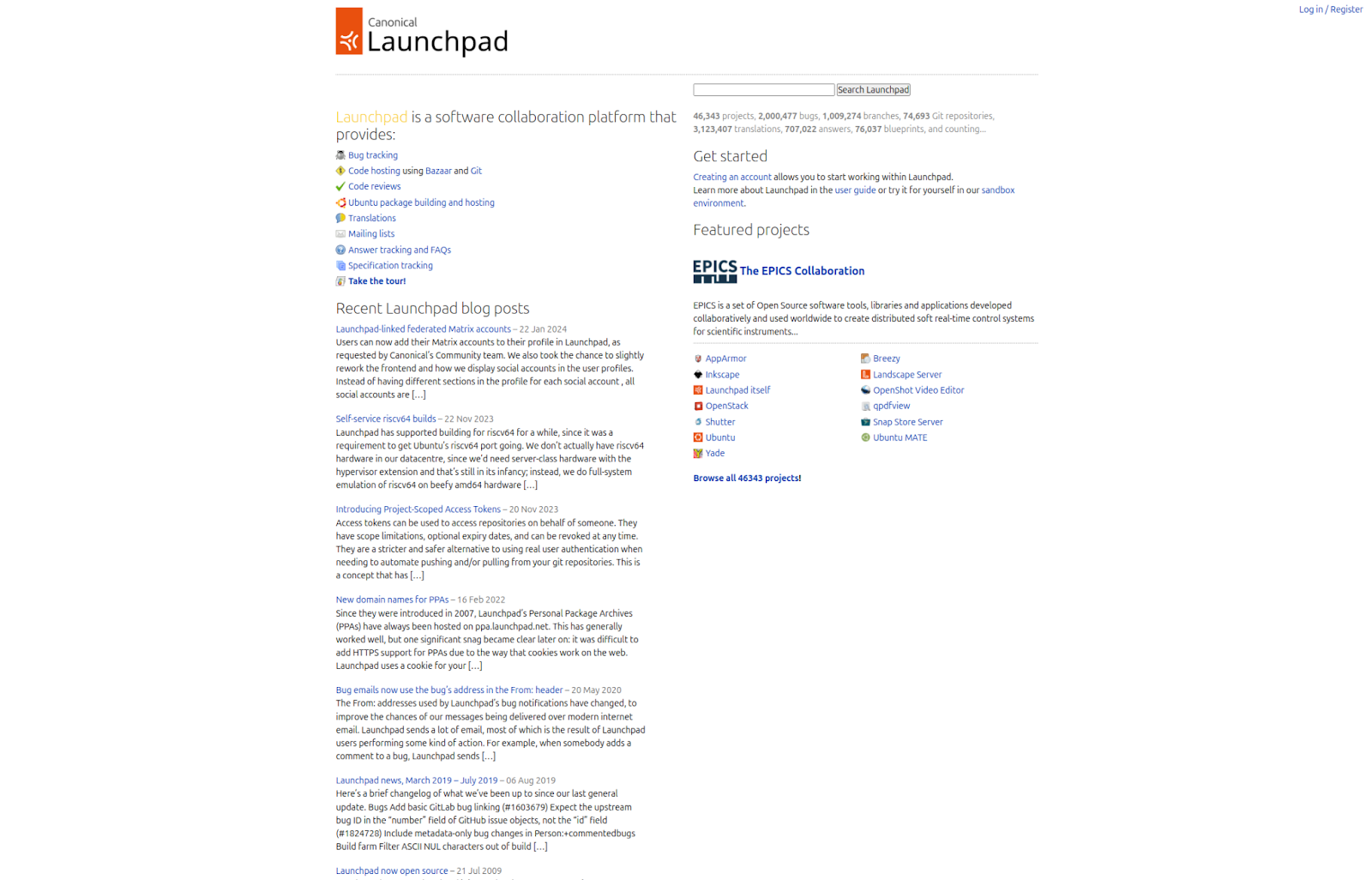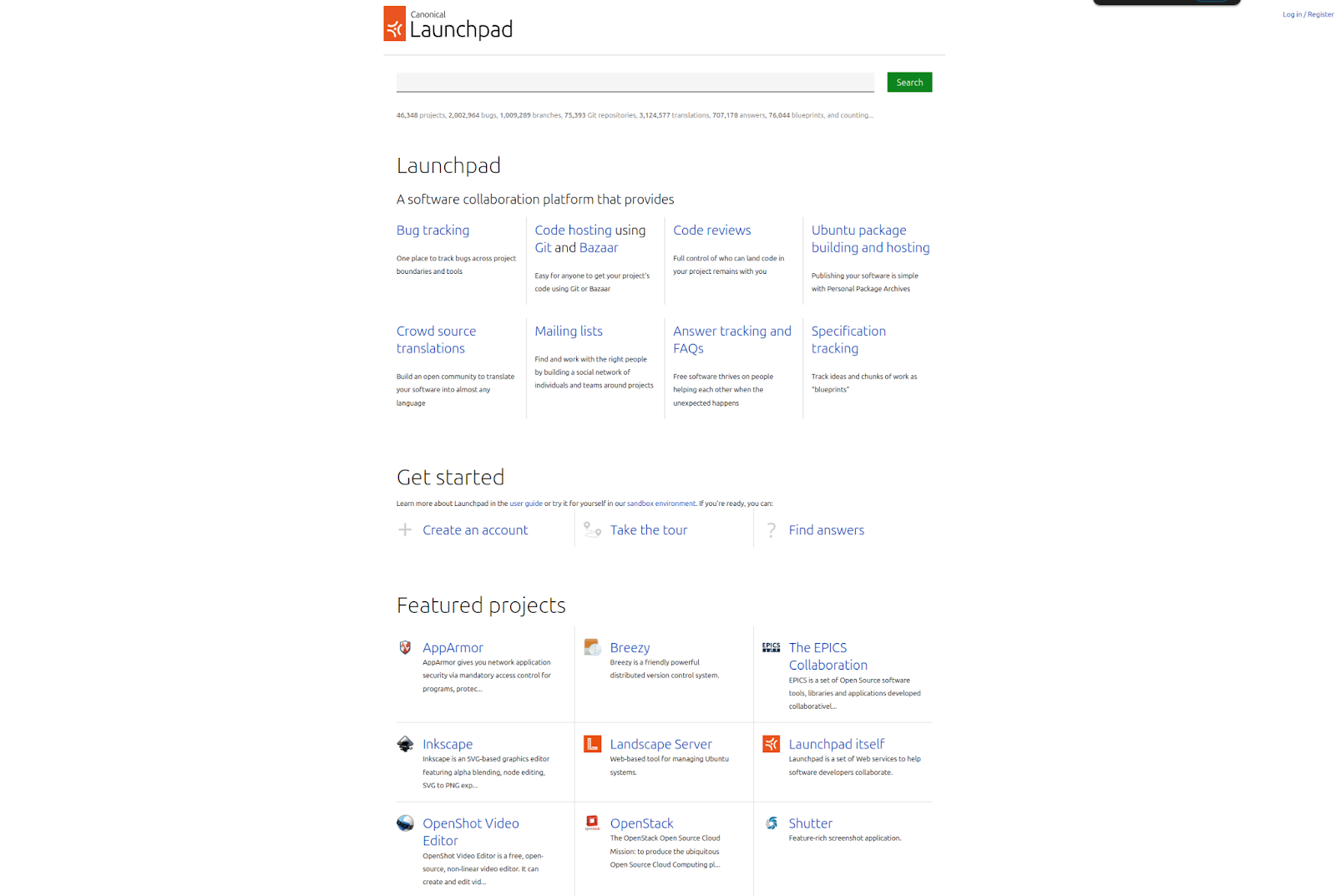Launchpad has been a key tool used in developing Novacut. I use Launchpad for code hosting, bug tracking, daily builds, and more. For almost two years I’ve been doing monthly stable releases on Launchpad, and Novacut now spans six separate Launchpad projects. To say the least, I’ve learned a lot about Launchpad in the process.
I don’t think Novacut could be where it is today without Launchpad, so I want to pass on some of what I’ve learned the past two years. Here are my five essential Launchpad best practices:
1. Daily Builds
I’m always very thankful that early on Paul Hummer took the time to school me on using Source Package Recipes to do daily builds. This Launchpad service gives you automated package builds across multiple architectures, and multiple Ubuntu releases.
I don’t know how to emphasize this enough, but seriously, you need daily builds. As a point of reference, daily builds are the 3rd item in the famed Joel Test.
These builds are triggered simply by making commits to the appropriate bzr branch on Launchpad (usually your trunk branch). You’ll automatically get up to one build per 24-hour period, and you can manually trigger additional builds when needed.
You can include your debian/ packaging directory in your project source tree, or you can keep debian/ in a separate bzr branch. For the Novacut components, I’ve found it most helpful to keep debian/ in the source trees because it’s handy to be able to land a code change and its corresponding packaging change in a single merge. This works for us because we currently can use the exact same debian/ for all the Ubuntu versions we support. If that’s not true for your project, you’ll need multiple debian/ branches.
For reference, here’s the Novacut Source Package Recipe.
2. Unit Tests
You should run your unit tests during your package builds, and you should fail the build when any unit test fails. This is particularly important for daily builds, because this will prevent a package with broken unit tests from reaching your daily PPA.
The Launchpad build servers are strict and unforgiving environments, which is a good thing when it comes to unit tests. The build servers are also probably quite different from your local development environment. On countless occasions our daily builds have caught failures that only occur on i386 (my workstation is amd64), or only occur on an Ubuntu release other than the one I’m running, etc.
To run your unit tests during the package build, you’ll need to modify your debian/rules file as appropriate. If you’re using debhelper, add an override_dh_auto_test target.
You might also need to add additional packages to the Build-Depends section of your debian/control file, packages that are needed by the unit tests but are otherwise not needed by the build itself.
For reference, here’s the debian/rules file used to run the Dmedia unit tests (which is also a handy Python3 example).
3. Track Ubuntu+1
When a new Ubuntu version opens up for development, I immediately start doing daily builds on the development version, even though I don’t typically upgrade my own computers till around 4 months into the cycle.
I use daily builds on the development release as an early warning system. With no extra effort on my part, these builds give me a heads-up about code or packaging changes that might be needed to make Novacut work well on the next Ubuntu release.
To enable daily builds on the next Ubuntu version, just go to your Source Package Recipe, click on “Distribution series”, and check the box for the newest series. Now you’ll have daily builds on the newest Ubuntu version, in addition to all the versions you were already building for.
For example, I’m currently in the process of enabling daily builds for Raring, as you can see in the Microfiber Source Package Recipe. And I did indeed encounter a build failure on Raring, seemingly caused by a debhelper issue.
For the first month or so in a cycle, I don’t tend to worry much about build failures on the development version. But after the dust has settled a bit, I make sure to keep the builds in working order, and I even do monthly stable releases for the Ubuntu development version. Again, I do all this pro-actively even before I personally start running the newest Ubuntu version.
4. PPAs & Users
Whenever someone asks me why I use Launchpad instead of github, my short answer is always, “PPAs and users”.
Source Package Recipes give you much more than just a build, they give you daily packages that are easily consumable by your testing community and early adopters. This tight feedback loop prevents you from running too far ahead without getting a good reality check from your target users.
Keep in mind that for some products, the early adopters willing to install from a PPA might not be all that representative of your target user. So when it comes to making design decisions, you might need to politely ignore certain feedback from some of these early adopters. In my experience, this wont cause any hard feelings as long as you have clearly communicated who your target user is, and why.
For reference, you might look at the way we’ve defined the Novacut target user.
I recommend creating PPA names that are well-branded and easy to remember. First, create a Launchpad team with the same name as your product. In our case, we have a ~novacut team. Second, I recommend creating a daily and a stable PPA owned by the same team. In our case, that gives us two easy to remember PPAs:
Although none of our target users (professional video editors) currently use Ubuntu to do their job, I’ve been surprised by how many follow Novacut’s development via our stable PPA, and even our daily PPA. This has helped keep us on track, and has helped us build customer loyalty even before we have a finished product.
For me personally, this daily user engagement also makes the design and development process more enjoyable. It’s hard to empathize with an abstract persona; it’s easier to solve specific problems for specific people.
5. Use Apport
Till recently I didn’t realize that you can use Apport for automated crash reporting in unofficial packages delivered through a PPA.
We haven’t had Apport integration for that long, but it’s already provided us with dozens of highly valuable crash reports. Almost immediately some hardware specific issues came to light and were fixed, convincing me that a key benefit of Apport is knowing how your app might misbehave on a larger, more variable pool of hardware.
Apport also helped some rare bugs come to light. I thought Dmedia was basically crash-free, but those one-in-a-thousand bugs pop out quickly when thousands of people are running it. Most of these bugs would have eventually been found by one of our core devs, but the quicker a bug is discovered, the quicker and easier the bug is to fix.
For more info, check out this blog post and this screencast, where I covered our Apport integration in detail.
And for reference, see the merge proposal that added Apport integration in Novacut.
A big thank you to Jason DeRose for sharing how his project uses Launchpad on a daily basis.





